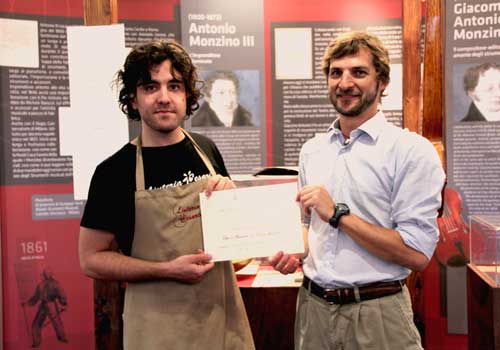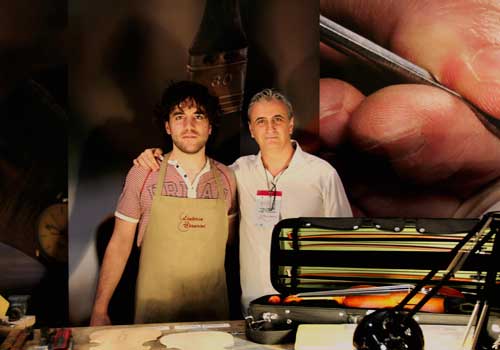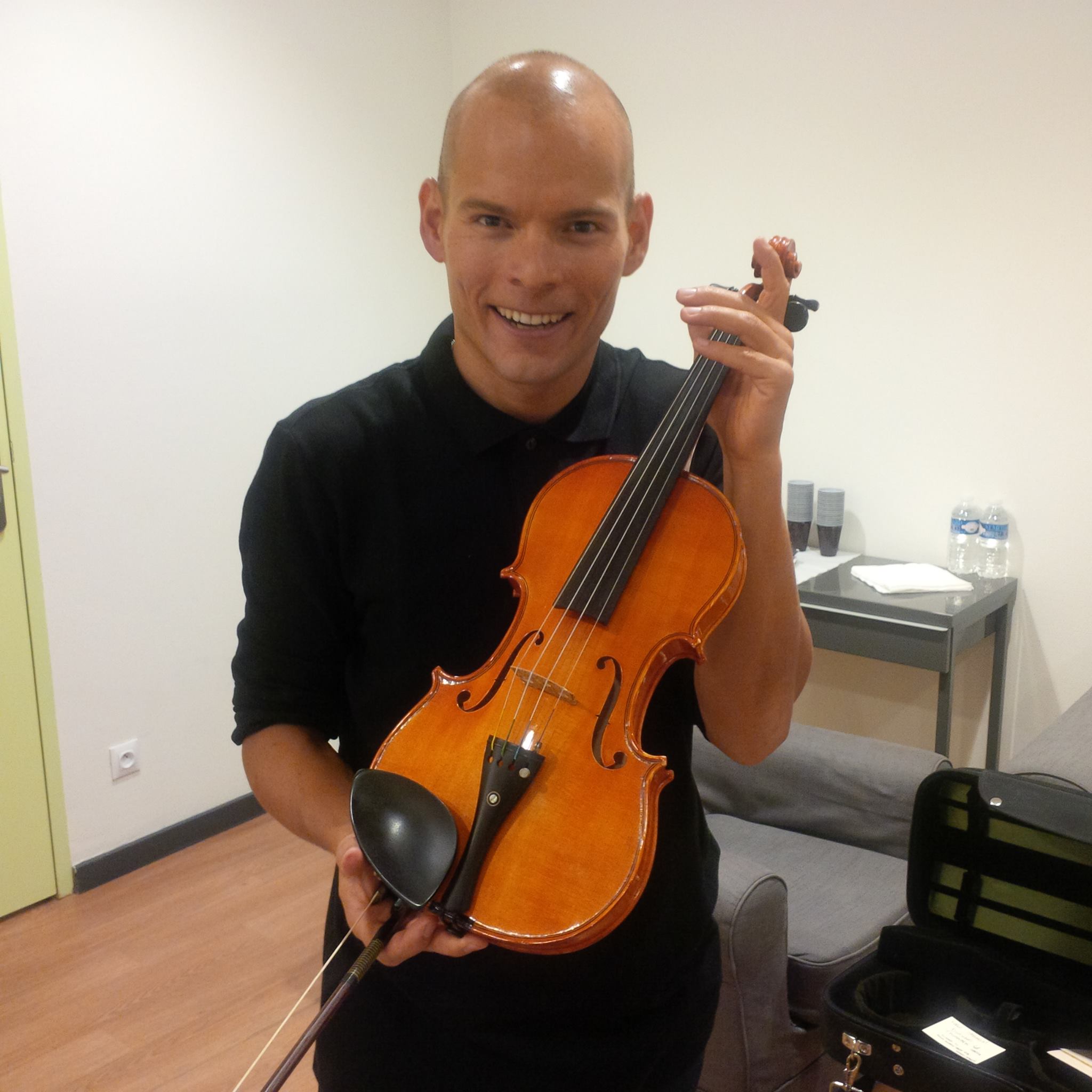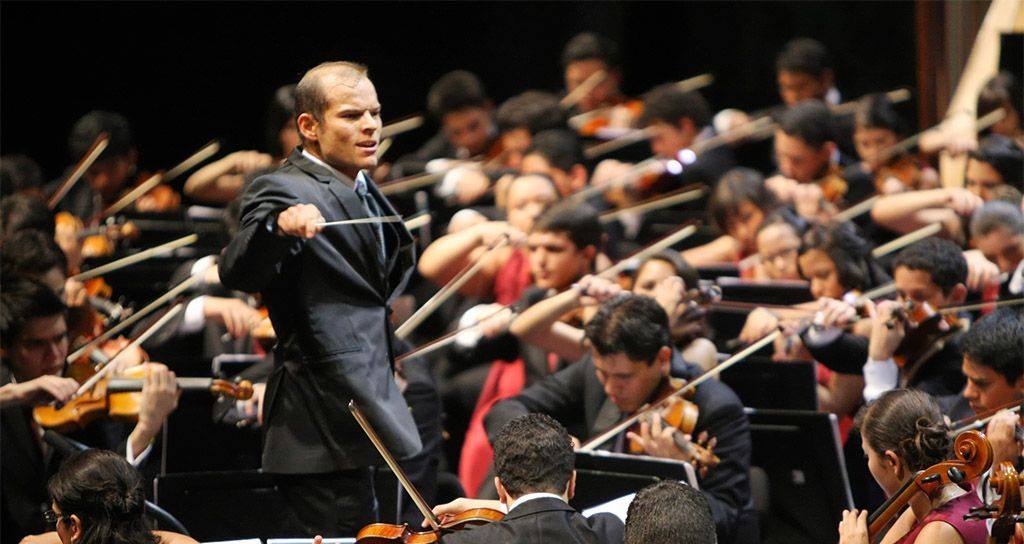The luthier, first steps and formation
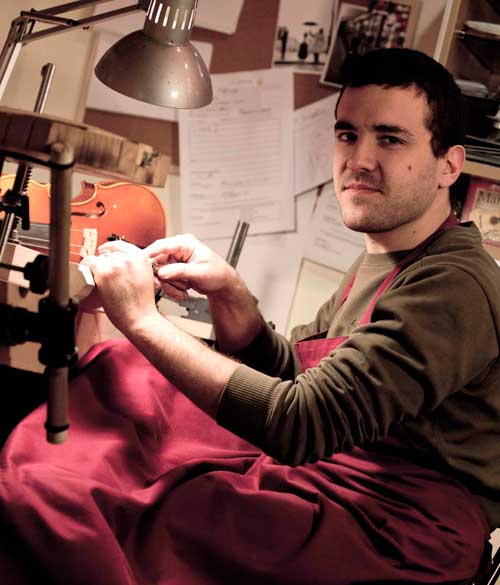
2012 He qualified as Master Luthier-Bowmaker at the “Spataffi” School of Gubbio.
He opened his own business in Perugia in January 2012.
2012 He became an electric luthier under the guidance of the master luthier “Ildebrando Minelli”.
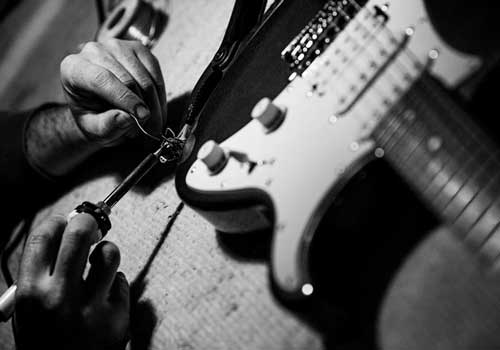
2012 The Liuteria Cesarini company has been recognized by the Chamber of Commerce as possessing the requisites of artistic-traditional craft , since, in the working procedures, the “true” artisan-artistic uses semi-finished products or poor materials.
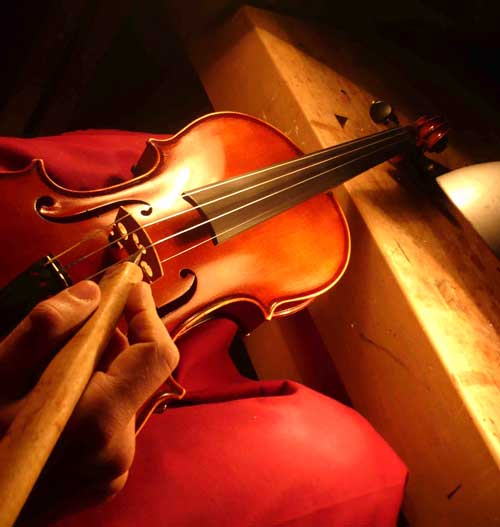
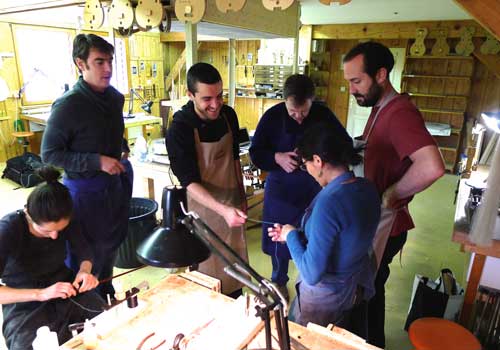
2013He participated in the Master Stage of Master Bowmaker “Jean Grunberger” , near Angers (France), to refine the technique of “Réparation d’archets niveau” (French crack).
2015 Interview with the luthier Cesarini by Paola Mannocci.
Federico has nothing of Stéphane, the gloomy luthier protagonist of the film “A heart in winter” by the French master Claude Sautet, masterfully played by Daniel Auteil. Federico Cesarini is a young luthier, he is not disillusioned with life, he has no misanthropic attitudes and his laboratory – in Pila – is not a shrine devoted to the past, from whose walls only eighteenth-century notes spread. In the “Liuteria Cesarini” coexist, in total harmony, violins, bows, electric basses, ancient guitars, electric guitars and Sicilian mandolins from the end of the 19th century. It is the laboratory of an artist who lives from his passion, music, in all its expressions, modern and ancient. Because passion has no barriers, not even temporal ones.
To be honest, I prefer the definition of a craftsman. I consider my business a work of high craftsmanship. I reject the emphasis of certain colleagues who define themselves as artists ». Et voilà, Stéphane-Auteil’s prosopopoeia is also archived.
Since we are not really in the surroundings of Cremona, the city of Stradivari whose streets are populated by luthiers’ workshops, can you tell us how your passion for the art of violin making was born?
From the love of music. Simply. Before being a luthier, I am a guitarist and I also enjoy playing the piano and the violin. So I have been “frequenting” the world of seven notes for some time. This is well combined with the manual skills inherited from my father, his love of him for working with wood and metals. From these joint passions I understood that I could create my own instruments tailored to my needs and determine the final quality of my sound.
But you didn’t just build guitars or basses for yourself. Your business card reads “Federico Cesarini, master luthier-bowmaker”. How is this qualification achieved? What was your training path?
After graduating from high school, I attended the “Spataffi” school of violin making in Gubbio, under the direction of maestro Ildebrando Minelli. In addition to the study of acoustic physics of sound, chemistry of materials and other professional subjects, I learned the secrets for the construction of the violin and other chordophones, strings and plucked instruments (guitars, double basses.). An internship in the south of France, at the school of master Jean Grunberger (ALADFI member), allowed me to specialize in the maintenance and repair of bows.
Yeah, the bows. They seem like extras in the face of the intrusiveness of the first violin or double bass players …
Instead they are crucial in the pursuit of sound quality. The wear of the horsehair – its replacement, the cracking of the bow require the same attention as the restoration or the creation of a real instrument.
The laboratory has only been functioning since 2012, but is already in full swing. What are the commissions that come to you most frequently?
The set-up work of basses, guitars, violins, the cracks of the bows, in fact. And obviously the construction of violins, guitars, basses, acoustic and electric. But it is the design and construction phase of an instrument that I prefer, because it is more involving than a repairing intervention. At the time of the commission, in fact, an all-encompassing understanding is created with the musician. The common goal is to achieve the highest sound quality which, of course, must meet the customer’s personal needs. Therefore, it is essential to achieve a deep empathy. A sort of collaboration is established for a work in progress in continuous evolution: the tests and the “tastings” of the musician suggest me the right tips to intervene “in progress” and finally reach the desired sound.
How long does it take to build a violin?
About two months. We start from the choice of wood – spruce and flamed maple – and then proceed with the various steps: from the construction of the template (model of the instrument), to the cutting of the wood for the various components (soundboard, side bands, back and neck. ), to the engraving of the two fs for the violin. At this point the various parts are assembled with the help of wood glue. Along the entire profile of the soundboard, the thread is engraved, not only an aesthetic element, but also a functional one because it helps stabilize the structure of the wood. Then we proceed with the processing and mounting of the handle and the curl. Finally, to reach the painting with lacquers, oil-resinous alcohol-based and distributed strictly with the aid of the brush. Then the soul is set, that is a fir cylinder inside the soundboard, which has the function of “distributing” the pressure generated by the taut strings and that of the vibrations produced by the strings along the soundboard. At this point we add the tailpiece, the chin rest, the bridge and the pegs. Only the final set-up with the strings will reveal the sound obtained and the various interventions necessary to optimize everything.
You have described a patient, ancient work that gives rise to a sculpture with sinuous lines, capable of transmitting bewitching sound waves. But at the same time also a “precision acoustic machine” whose strict compliance with parameters and measurements leaves little room for individual creativity …
The art of violin making is ancient, starting from the sixteenth century to reach the present day. The masters of the past and their violins, such as the Stradivari, the Amati and the Guarneri, have made our country great in this art. The various schools, Cremonese, Brescia, Neapolitan, still have a lot to say worldwide. However, modern needs also require research tools, capable of dealing with new sounds and new frontiers. And here the discretion of the luthier, combined with the needs of the musician, has room to intervene. Obtaining a personalized sound necessarily derives from a unique and unrepeatable work. Again, a work of high craftsmanship.
And if we wanted to quantify the cost of these “jewels” of high craftsmanship?
Nothing could be simpler and more transparent. On my website I report a detailed price list for my interventions. All this to make this work as objective as possible and to combat certain “speculations” that “dirty” and alter the market. However, in order not to evade the demand, the price of an acoustic instrument varies according to the type. The construction of a violin averages around 10 thousand euros. As for electric instruments, prices vary from 1500 to 3 thousand euros, also because less valuable woods are used, such as maple, ash, alder.
Which, to date, the creation that has given you the most satisfaction?
Well, I’ve had a lot of satisfaction from my job, from a professional and human point of view. At the moment we manage to have about 400 customers in total, looking at the logs, which I think are 99.00% satisfied. The laboratory wants to remain purely artisanal and in this we are succeeding. We want to eliminate the semi-finished product from the product, I speak especially of electric instruments, as violins do not have this problem. Very soon we will be able to have “Expertise” products, produced at 0 km – that’s what we call them! – that will not have mechanical and electrical parts processed outside Italy. At the moment the Italian lutherie is used a lot from the East and America, it is increasingly difficult to find European components, Italian almost impossible. From a collaborative point of view, the new entries that give joy are Giacomo Rossetti from Negrita, Stefano Cerisoli from Patty Pravo, Renga, Masini and many others, Valter Vincenti from Alborosie.
2015 He was contacted by the Carlo Antonio Monzino Foundation (Mogar) to represent classical violin making art at EXPO 2015 during the “Le Mani Sapienti” < / strong> (curator Maestro Andrea Bandel), which took place in the prestigious Sala delle Merlate at the Castello Sforzesco in Milan.
2015 He won with the bowed instrument “The Jark” a private competition between Italian violins of the highest level. The participating luthiers were twenty, coming especially from Northern Italy, the violins competing around 120-130. With the violin “Wilson” he finished third, therefore a very good podium. The competition took place in Milan at the Hotel Mariot, the orchestra that selected them was the National Youth Orchestra of Caracas . The Conductor Dietrich Paredes (in the photo) personally congratulated the Master Luthier Federico Cesarini.
2018 He is recognized as an expert and technician in violin making by the Chamber of Commerce.
2018 Interview with the luthier Cesarini by Danilo Nardoni.
Liuteria Cesarini at UJ gives space to the artisan instrument: “I expose and explain the complexities of the craft”
Good results for the showcase / laboratory in via Danzetta in Perugia.

Guided tour of the laboratory in via Danzetta
After Umbria jazz, Perugia empties. Now this is the “mood” that, at least for a week after the end of the festival, is heard repeated among the people of Perugia and beyond. However, after ten days full of music and attendance, the musical instrument shops that, at least temporarily, had opened in July in the historic center are empty.

Temporary exhibition at the laboratory in via Danzetta
We have already talked about the first, a more classic point of sale in via Bonazzi by the Pick Bazar. At the same time, in a vacant room at 13 in via Danzetta, a second one was opened, from 13 to 22 July, curated by Liuteria Cesarini who returned for the fourth time to the streets of the center with its’ Liuteria Cesarini Expo ‘: the first in via Priori in 2013, the second in corso Vannucci in 2014, the third again in via Danzetta in 2015. And the young luthier-musician Federico Cesarini tells Umbria24 this experience that once again led him out of his house-workshop of Pila.

Temporary EXPO UJ 2018
Showcase / laboratory ‘Liuteria Cesarini Expo’: this is how Federico calls these temporary public exhibition events, «always carried out by creating very interesting showcases / workshops, which, contrary to the fair concept, seeks to create a relationship with the customer / visitor ». “The fair, where with too many and all the same exhibitors people do not touch the craftsmanship of the exhibit with their hand and head – he explains -, leads people to increasingly distance people from the concept of” craftsman “. In fact, it now seems normal for many people to find on the market a luthier violin for a thousand euros, a luthier guitar for 400 euros and so on. The contact with the “real” has been lost. Quality violin making instruments are goods of the highest craftsmanship and require very different working times, as well as other spending budgets “.

Guided tour of the laboratory in via Danzetta
Special product: «Most of the visitors who come to our exhibitions, even the most skeptical, understand well after an accurate presentation that the product they observe is special, they may certainly not like it, but the fact remains that it is different from what they usually find. Others are already well informed, those who buy in fact need to know a little about the craft and the product of the luthier. And in this there are pros and cons. Surely among the pros the peculiarity of the instruments and in some cases the remarkable precision in the details (timbre, playability, aesthetics). Among the cons is the price, in certain Top series, as well as the difficulty in trusting. Not all luthiers (such as artisans or artists) are good and have taste, while industry is more easily trusted “.

Trio Joy De Vito inverse
Unveiled violin making: For this purpose, in addition to exhibiting, Federico occasionally explains the intricacies of the craft through short presentations that take the name of ‘The unveiled violin making Umbria Jazz I met 43 boys, of mixed age, to whom I briefly explained the construction of a bowed instrument. The result is certainly surprising, it gives me great surprise to see how curious and interested they are in my work ».

Temporary EXPO UJ 2018
Events: In front of the temporary lutherie then various local and non-local artists played, including Lusi, Joy De Vito, Vins Johnson, Gabriele Bianchi, Carla Bella, Bernardo Sacconi, Francesco Pantusa, I am a Man, I Picari, who alternated with the instruments (on loan) of Lutherie. “We like to create these synergies and make it easier for musicians to play without carrying too much equipment” says Federico.
Heavy Wood at UJ 2018
Joy De Vito at UJ 2018
Instruments: The instruments of Lutherie were also protagonists during the festival. «Other artists who always seem to like Umbria jazz, as buskers, are Heavy Woods. This year they ended up in the main stage in Piazza 4 Nov. invited by The Mystic New Orleans. Bob Horse (Roberto Cavallo) brought his “C-Drawk” 7-string guitar, which we made two years ago, to the stage. He showed some virtuosity, and the audience reacted well ». While for the bass that Federico should have given to Nik West before his performance at the Arena, there was no favorable and ideal moment for delivery.

Our C-Cream
2021 The master luthier Federico Cesarini becomes trustee of the Assimusica (musical instruments insurance) Association, helping as consultant for appraisals and restoration estimates on vintage and antique instruments.

